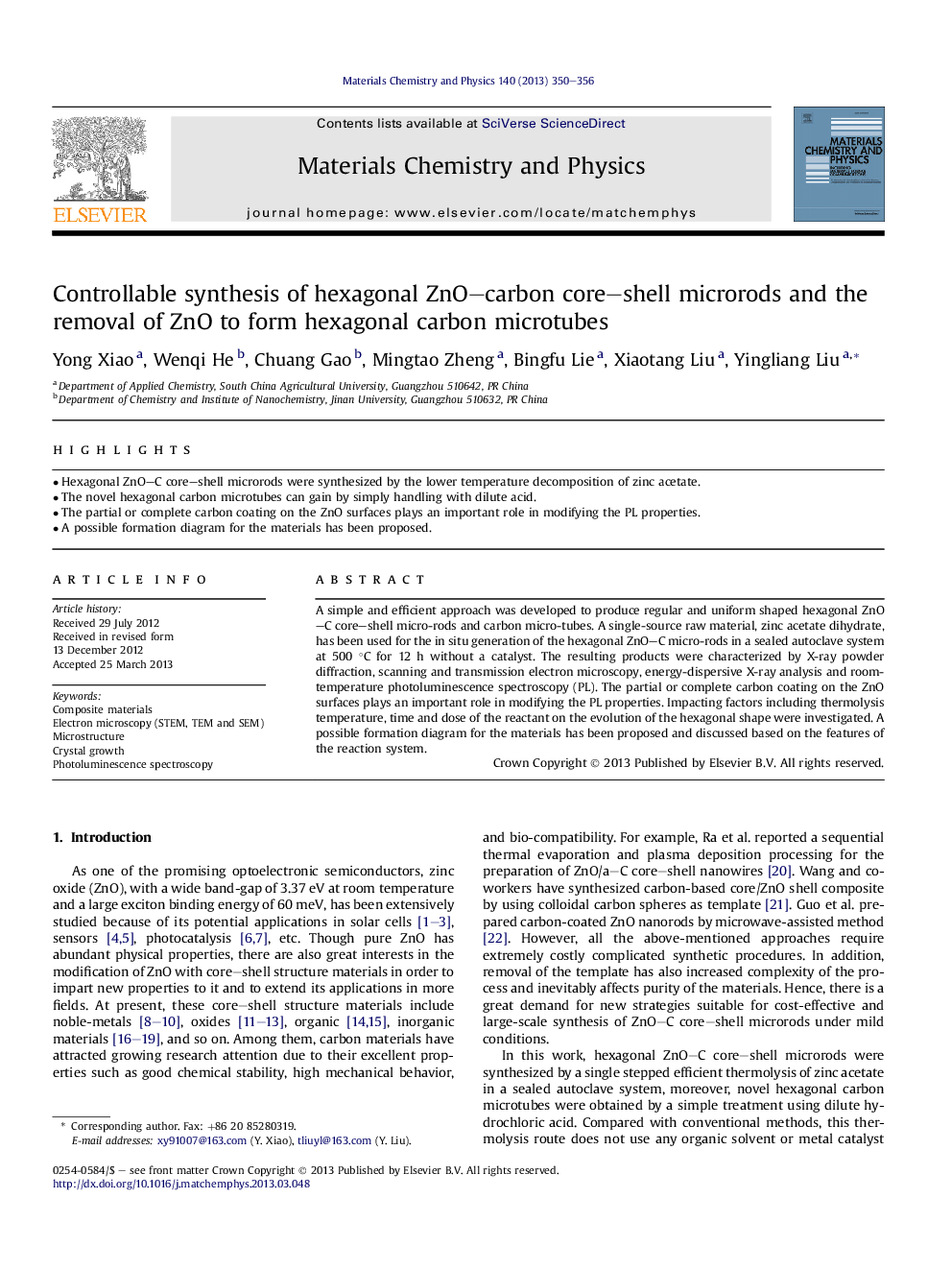| Article ID | Journal | Published Year | Pages | File Type |
|---|---|---|---|---|
| 1522861 | Materials Chemistry and Physics | 2013 | 7 Pages |
•Hexagonal ZnO–C core–shell microrods were synthesized by the lower temperature decomposition of zinc acetate.•The novel hexagonal carbon microtubes can gain by simply handling with dilute acid.•The partial or complete carbon coating on the ZnO surfaces plays an important role in modifying the PL properties.•A possible formation diagram for the materials has been proposed.
A simple and efficient approach was developed to produce regular and uniform shaped hexagonal ZnO–C core–shell micro-rods and carbon micro-tubes. A single-source raw material, zinc acetate dihydrate, has been used for the in situ generation of the hexagonal ZnO–C micro-rods in a sealed autoclave system at 500 °C for 12 h without a catalyst. The resulting products were characterized by X-ray powder diffraction, scanning and transmission electron microscopy, energy-dispersive X-ray analysis and room-temperature photoluminescence spectroscopy (PL). The partial or complete carbon coating on the ZnO surfaces plays an important role in modifying the PL properties. Impacting factors including thermolysis temperature, time and dose of the reactant on the evolution of the hexagonal shape were investigated. A possible formation diagram for the materials has been proposed and discussed based on the features of the reaction system.
